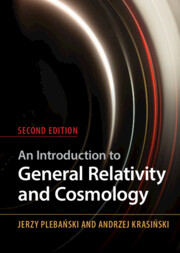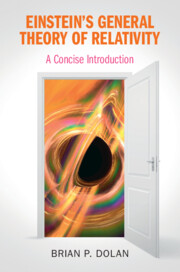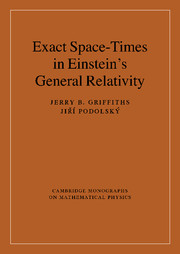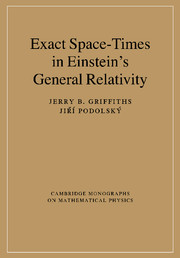An Introduction to General Relativity and Cosmology
Experts Plebański and Krasiński provide a thorough introduction to the tools of general relativity and relativistic cosmology. Assuming familiarity with advanced calculus, classical mechanics, electrodynamics and special relativity, the text begins with a short course on differential geometry, taking a unique top-down approach. Starting with general manifolds on which only tensors are defined, the covariant derivative and affine connection are introduced before moving on to geodesics and curvature. Only then is the metric tensor and the (pseudo)-Riemannian geometry introduced, specialising the general results to this case. The main text describes relativity as a physical theory, with applications to astrophysics and cosmology. It takes the reader beyond traditional courses on relativity through in-depth descriptions of inhomogeneous cosmological models and the Kerr metric. Emphasis is given to complete and clear derivations of the results, enabling readers to access research articles published in relativity journals.�
- This second edition improves the presentation in several chapters; chapters on relativistic cosmology contain new results and there is a new chapter on relativistic effects in the Global Positioning System
- It contains more detailed discussions than other textbooks of several topics, including the Lie derivative, Killing vectors, Petrov classes, inhomogeneous cosmological models (via the Lemaître–Tolman and Szekeres metrics) and the Kerr metric
- Every chapter includes a series of exercises, the more difficult of which include hints for their solution
Product details
June 2024Hardback
9781009415620
578 pages
250 × 175 × 36 mm
1.15kg
Available
Table of Contents
- The scope of this text
- Preface to the second edition
- Acknowledgements
- 1. How the theory of relativity came into being (a brief historical sketch)
- Part I. Elements of Differential Geometry:
- 2. A short sketch of 2-dimensional differential geometry
- 3. Tensors, tensor densities
- 4. Covariant derivatives
- 5. Parallel transport and geodesic lines
- 6. The curvature of a manifold
- flat manifolds
- 7. Riemannian geometry
- 8. Symmetries of Riemann spaces, invariance of tensors
- 9. Methods to calculate the curvature quickly: differential forms and algebraic computer programs
- 10. The spatially homogeneous Bianchi-type spacetimes
- 11. The Petrov classification by the spinor method
- Part II. The Theory of Gravitation:
- 12. The Einstein equations and the sources of a gravitational field
- 13. The Maxwell and Einstein–Maxwell equations and the Kaluza–Klein theory
- 14. Spherically symmetric gravitational fields of isolated objects
- 15. Relativistic hydrodynamics and thermodynamics
- 16. Relativistic cosmology I: general geometry
- 17. Relativistic cosmology II: the Robertson–Walker geometry
- 18. Relativistic cosmology III: the Lemaître–Tolman geometry
- 19. Relativistic cosmology IV: Simple generalisations of L–T and related geometries
- 20. Relativistic cosmology V: the Szekeres geometries
- 21. The Kerr metric
- 22 Relativity enters technology: the Global Positioning System
- 23. Subjects omitted from this book
- 24. Comments to selected exercises and calculations
- References
- Index.







